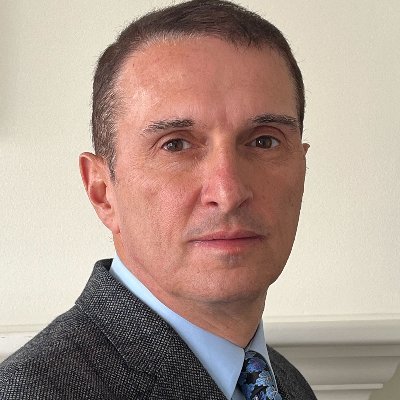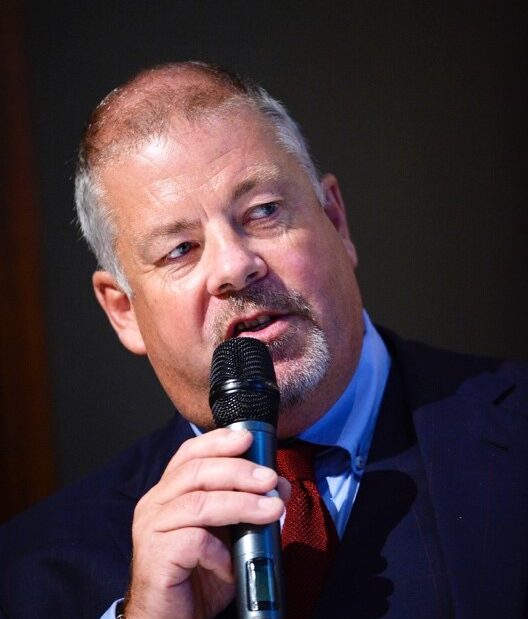Transcripts

Erik: Joining me now is Goehring & Rozencwajg co-founder Leigh Goehring. Leigh, it's great to get you back on the show. For any new listeners who didn't catch your last interview, I want to start by just setting the context for everyone. We had you and your partner Adam Rozencwajg on the show last year. Adam predicted that there is going to be an energy crisis in coming years. You predicted that there's going to be a food inflation and food price crisis in coming years. At the time, our feeling was we thought Adam's story was the one that was more imminent more likely to happen right away. We thought the food story was likely to play out in a longer timeframe. Seems like it's going the opposite way that the energy story hasn't happened yet. But boy, food inflation in the last six months has been really significant. What's driving it and why are things happening out of order?
Leigh: Erik, and thanks for having me back again. And I do remember talking extensively about global agricultural markets with you. Not much has changed from the last time you and I talked. I talked about what were the factors that were going to push the world into a global agricultural global food crisis. And what's interesting since then, a lot of that has happened. And you know, just to step back a little bit, you know, what were those factors that we believed were going to produce maybe one but potentially multiple food crises, agricultural crises as we progress through this decade. And one was the fact that is that over the last 20 years, we've seen a significant ratcheting up of the demand for global grain. And the underlying fundamental reason behind that is that never before have so many people been in that notch of disposable income, which basically goes from about $500 to $1,000 per capita GDP then goes through their expansion cycle and eventually reach 5-6-$7,000 per capita GDP. Never have there been so many people that have been going through that period in their economic cycle. And one of the things when you when you go through that increase in per capita GDP, you want to change your dietary preferences. You basically want to switch from, you know, subsisting primarily on starch, which would be wheat and rice primarily to enjoying a more protein animal protein-based diet. And I talked in our last interview that we had gone back and studied every emerging market economy since the late 1950s. And how they had gone through this transition. And we postulated that, that this was the reason why global grain consumption between 1980 and 2000 basically grew at about 1.3% per year, which is in line with population growth. And then all of a sudden, from 2000 to 2020 ratcheted up to over 2% per year. That's a big increase.
And, you know, we also said that, that those trends are going to continue as we go through this decade. And if you go back and just look at the, the USDA, the report is the world agricultural supply demand, a report that they put out once a month. You'll see that since 2018 to today, global grain consumption has grown an additional 6% just those last four years. So the thing is the underlying strong global grain demand trends are continuing. The other side of the potential agricultural crisis that was going to occur was changing weather patterns. And obviously, we're hearing a lot about how adverse weather conditions are affecting huge parts of the world. And it's being, you know, almost universally credited to global warming in the Related global warming climate change. But, you know, we take a little bit of a different view on that, we believe that we have just started the first part of a global cooling cycle. I know this is very, very contrarian. And you know, it's not something that a lot of people follow closely. But you know you know, you can call me crazy, you can call me out on the fringe. But I'm a big believer that there is a very loose, loose relationship between sunspot cycles and weather patterns. And one of the most interesting things is that in the last 20 years, we have been in a very pronounced declining sunspot cycle. And what's so interesting about that is, declining sunspot cycles have often been associated with periods of global cooling. And in periods of global cooling, I should point out weather patterns become much more disruptive to global grain producing regions. And that's exactly what we've seen in the last four or five years.
And I think this is just going to continue as we go through this decades. So, you still have very, very strong global grain demand. And that's brought about by the big increases in per capita GDP that's happening in multiple parts of the world, primarily in all the emerging markets. And this global grain boom is bumping up against very, very adverse weather patterns. And it's going to produce. It's produced the first leg of this crisis and as we go on and talk in this podcast, it's going to produce other crises as we go through this decade.

Erik: Joining me now is Bianco Research Founder, Jim Bianco. Jim, it's great to get you back on the show. It's been way too long. Let's start since it's an FOMC week. It will be yesterday to our listeners who are hearing this Thursday. It's this afternoon for you and I. FOMC met, what happened? What does it mean for inflation, for Fed policy, for bond rates, and so forth? What are we looking at?
Jim: Well, as everybody knows, the Fed did not raise rates for the first time in 14 months, 15 months. And the question is, is it up? You know, the terminology we're using... Is it a skip or is it a pause. Skip would mean that they are going to hold off by not raising rates for maybe one or two meetings. A pause would mean that they're not going to raise rates for several meetings, or which could eventually wind up into being the end of the cycle. The interesting thing that came out of the meeting, this was the quarterly meeting where they do the update of the dot chart, and the 2023 dot chart and that's all the members of the Fed put down where they think the funds rate is going to be, at the end of the year, showed that they think that we're going to have two more rate hikes this year. Two more 25-basis point rate hikes. Remember now, we have four meetings left. And so they're going to raise rates 50 basis points between now and the end of the year. Of the 18 members that filled out a dot, 16 of them had the rate head funds rate going up at least once. The two that didn't had it unchanged. So there's no rate cut that is being suggested here. So it's being referred to as a hawkish skip, because they really laid the groundwork for it. They stopped raising rates, but they're not done. And lastly, there is a precedent, because in the last couple of months this year, we've seen both the Reserve Bank of Australia and the central bank in Canada both stop raising rates saw inflation firm a little bit and then restarted raising rates. So there's been other central banks that have done the skip or the minor pause thing already this year.

Erik: Joining me now is Bill Blain, author of Blain's Morning Porridge and strategist for Shard Capital. Bill, it's great to get you back on the show. It's been way too long. Let's dive in and start with the topic on everyone's mind inflation and central banks. Are we really in a transitory inflation that's about to go away and be all over and done with as so many people want to tell us?
Bill: Well Erik, it's great to be back on! Transitory, that's a word from last year, we don't use transitory anymore. We talk about how sticky inflation is because that's what's changed the underlying narrative surrounding inflation has gone from the central bank's promising us inflation last year, to the numbers know telling us that wage pressures, supply chain pressures, producers trying to put up prices, because of supply chain pressures and wage demands, is all contributing to a very different inflation landscape. But I don't think we can blame the central banks for getting it completely wrong, because they are getting inflation, under control for the economy that we thought we had. But the problem is, we have a very, very different post-COVID economy and I am very happy to go into that in detail.

Erik: Joining me now is Ronnie Stoeferle, principal author of the In Gold We Trust report and fund manager at Incrementum. Ronnie, it happens each spring and it's that time of year, the In Gold We Trust report is out. Listeners, you'll find the download link for the full report as well as a slide deck that Ronnie prepared to accompany today's interview. Both of those links are in your research roundup email. Ronnie, let's start with just the big picture for people who might not be familiar with the report, which is kind of the event of the season in the precious metals world. How did this thing come into existence? Who's behind it? What's the motive for it? What's the purpose of it? What will people find in the report? And what's new and interesting, and what's maybe the most exciting thing this year?
Ronnie: Hi, Erik. Thanks for having me. And yeah, you said my name almost perfectly. It's a tough name for English speakers, but you're getting better every year, so congrats. Well I started publishing this report already 17 years ago, and it's an annual report and over the years, it became bigger and bigger. And now it's probably one of the most widely followed publications on gold. And the problem is that it's not about gold, it's trying to understand everything, you know, opportunity costs, equity markets, inflation, that then of course, where interest rates are heading, geopolitical stuff, this whole de-dollarization discussion. Then we talk about mining stocks, technical analysis. We've got a chapter on the crack-up boom, we've got a chapter about narratives and how narratives are created. We've got a chapter about the civil war in the sound money community gold versus Bitcoin. Then of course, we've got two exclusive interviews, one with my dear friend Russell Napier and another one with Zoltan Poszar, and the leitmotif of this year's report is Showdown, because we're seeing three different showdowns at the moment.
First of all, the showdown when it comes to central banks versus, let's say, the real economy. So central bankers after raising interest rates that aggressively over the last year, they are facing not a dilemma but rather trilemma between, fighting inflation, then on the other hand, avoiding a recession or a hard landing. And then on the other hand, financial markets stability, especially in the banking space. So this is the first showdown. And we clearly are in the recession camp. The second showdown is when it comes to geopolitics. I mean, this de-dollarization topic that folks like Luke Gromen are talking about for ages already, this is now really becoming mainstream. And therefore, we dedicated two big chapters to that topic. Also, to the topic, how important emerging markets nowadays are for the gold space. And I think, Erik, we in the in the Western world, we think we are London, New York, that's the center of the gold world. Actually, it's not. The price of gold is more and more being made in Shanghai, in India, in emerging markets in general.
So therefore, we took a deep dive and analyzed what's actually going on in emerging markets when it comes to gold demand, but also when it comes to the infrastructure in the gold space. And then the third showdown is actually for the gold price itself. Gold has made new all-time highs in basically every currency. But in US dollar terms, we've been flirting with new all- time highs, and now we're like 100 bucks below. I have to tell you, the feeling that I have is, in the gold community, it seems that general investors couldn't care less and many gold bugs have thrown in the towel. So, this quite negative sentiment, in combination with a price that is only slightly below its all-time highs, I think that's a pretty good setup. So that's basically what the report is all about. We've got a chapter about CapEx, we've got a chapter about our own recession indicator that we've built. We take a deep dive to the topics of inflation, debt developments, we do technical analysis. So it's, it's a long read, 420 pages, but I think it's it's worth taking the time.

Erik: Joining me now is Tressis chief economist and fund manager, Daniel Lacalle. Daniel, it is great to get you back on the show. It's been way too long and of course, what's on everybody's mind and particularly when your name is mentioned is the macro outlook for Europe. We had pretty good perspective on the European story from some of our guests through last fall. Everybody knows about the energy crisis in Europe and boy, it seems like we made it through the winter, are we out of the woods? Are we headed for more trouble? What do you see in on the horizon and what's the situation look like in Europe?
Daniel: Thank you so much, Erik. Thanks for inviting me and I think you've summed it very well. On the one hand, we have survived the winter thanks to a very mild temperatures, very mild temperatures. And also, because rate hikes have had a very significant impact on commodity prices. So the combination of lower consumption of natural gas and at the same time, lower prices has certainly helped the European Union economy. The eurozone economy though remains very weak. We have had as latest PMI figures show that the manufacturing sector is in its 35th month of contraction. And overall GDP is slightly better because of lower imports certainly, because of higher government consumption, which is certainly not a positive in my book, because it comes fundamentally from higher debt. And because of the services sector remains relatively strong thanks to the tourist season and the amount of spending from savings that were accumulated during the COVID crisis. But those savings are almost consumed. Citizens all over the European Union are feeling the pinch of elevated and persistent core inflation and overall inflation. And the impact of rate hikes is certainly going to have a significant dent on the economy for a very simple reason. In the United States, the real economy is mostly financed through the private sector, and not through the banking system. About 15% of the US real economy is financed through the banking channel according to the IMF. In the European Union, it's 80% of the economy that is financed through the banking channel through direct banking, lending. And we are seeing, for example, in the latest figures from the ECB that lending is more challenging, that credit conditions are tightening very, very fast. So the combination of our situation that has been aided by weaker commodity prices and lower consumption may come back to bite in winter of this year because the European Union hasn't done anything significant to reduce its energy or to improve the energy crisis.
MACRO VOICES is presented for informational and entertainment purposes only. The information presented in MACRO VOICES should NOT be construed as investment advice. Always consult a licensed investment professional before making important investment decisions. The opinions expressed on MACRO VOICES are those of the participants. MACRO VOICES, its producers, and hosts Erik Townsend and Patrick Ceresna shall NOT be liable for losses resulting from investment decisions based on information or viewpoints presented on MACRO VOICES.
